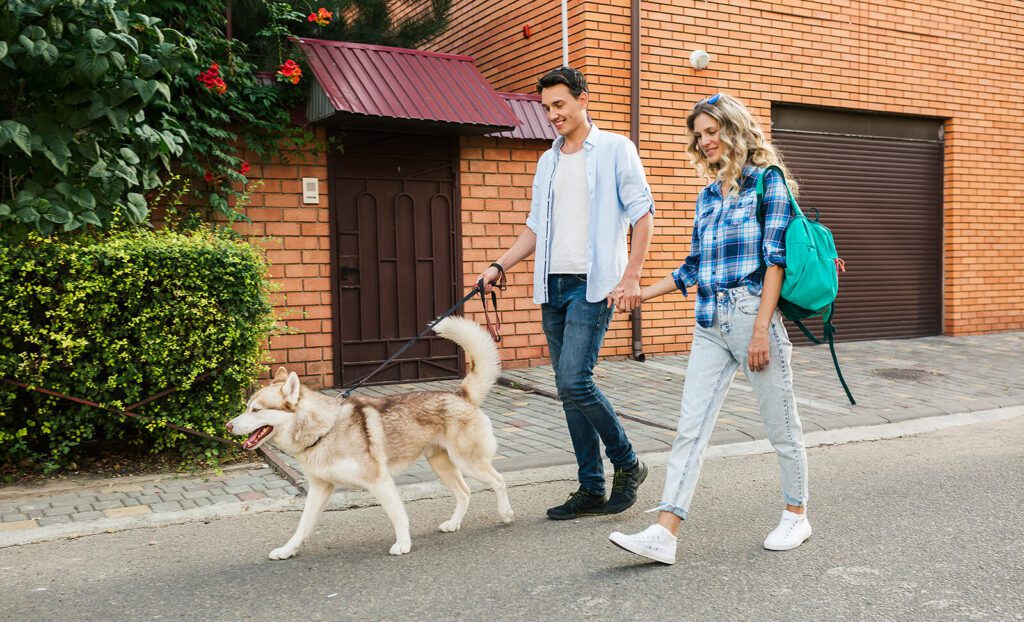Walking your dog should be a relaxing and enjoyable activity for both you and your furry friend. However, if your dog pulls on the leash, walks can quickly become a stressful experience. Teaching your dog to walk on a leash without pulling is not only essential for your comfort but also for their safety. At Precision Dog Training Academy in Kansas City, Kansas, we believe that with the right techniques and a little patience, any dog can learn to walk calmly by your side. Here’s a step-by-step guide to help you train your dog to walk on a leash without pulling.
Understanding Why Dogs Pull on the Leash
Before you begin training, it’s important to understand why dogs pull on the leash. For many dogs, the excitement of being outdoors and the desire to explore can lead to pulling. Additionally, some dogs naturally walk faster than their owners, leading to tension on the leash. Understanding these reasons can help you address the root cause of the behavior.
Step 1: Choose the Right Equipment
The first step in leash training is selecting the right equipment. A sturdy leash and a comfortable, well-fitting collar or harness are essential. While a regular collar works for many dogs, a front-clip harness or head collar can provide more control, especially for strong pullers. These tools help redirect your dog’s forward momentum, making it easier to teach them to walk calmly.
Step 2: Start with Loose-Leash Walking Indoors
Begin your training indoors or in a low-distraction environment. This allows your dog to focus on you without the excitement of the outdoors. Hold the leash loosely and encourage your dog to walk by your side using a treat or their favorite toy as a lure. Whenever your dog walks beside you with a loose leash, reward them with a treat and praise. This helps your dog associate walking calmly by your side with positive reinforcement.
Step 3: Practice the Stop-and-Go Technique
One of the most effective methods for teaching your dog not to pull is the stop-and-go technique. When your dog begins to pull on the leash, stop walking immediately. Stand still and wait until your dog returns to your side or loosens the tension on the leash. Once the leash is slack, start walking again. If your dog pulls again, stop immediately. Over time, your dog will learn that pulling does not get them where they want to go, but walking calmly by your side does.
Step 4: Use the “Heel” Command
Teaching your dog the “heel” command can be incredibly useful for leash training. The “heel” command instructs your dog to walk closely by your side, matching your pace. Start by walking with your dog on a loose leash. As they walk beside you, say “heel” and reward them with a treat. Repeat this process, gradually increasing the duration your dog stays in the “heel” position before receiving a reward. Consistency is key, so practice this command regularly during walks.
Step 5: Gradually Increase Distractions
Once your dog is reliably walking on a loose leash indoors, it’s time to take the training outside. Start in a quiet area with minimal distractions and gradually increase the level of difficulty by introducing more stimuli, such as other dogs, people, or traffic. Continue using the stop-and-go technique and the “heel” command as needed. If your dog gets distracted and starts pulling, gently redirect their attention back to you with a treat or a toy.
Step 6: Be Patient and Consistent
Leash training takes time, especially if your dog has been pulling for a while. Patience and consistency are crucial. Keep training sessions short and positive, ending on a successful note whenever possible. Remember, every dog learns at their own pace, so it’s important to stay patient and celebrate small victories along the way.
When to Seek Professional Help
If you’re struggling with leash training despite your best efforts, it may be helpful to seek the guidance of a professional dog trainer. At Precision Dog Training Academy in Kansas City, Kansas, our experienced trainers can provide personalized support and techniques tailored to your dog’s specific needs. Whether your dog is a strong puller or easily distracted, we can help you achieve a stress-free walking experience.
Conclusion
Training your dog to walk on a leash without pulling is an important skill that enhances your walks and strengthens the bond between you and your dog. By using the right equipment, practicing patience, and employing effective techniques like the stop-and-go method and the “heel” command, you can teach your dog to walk calmly by your side. At Precision Dog Training Academy, we’re here to support you in every step of your training journey. Happy walking!






